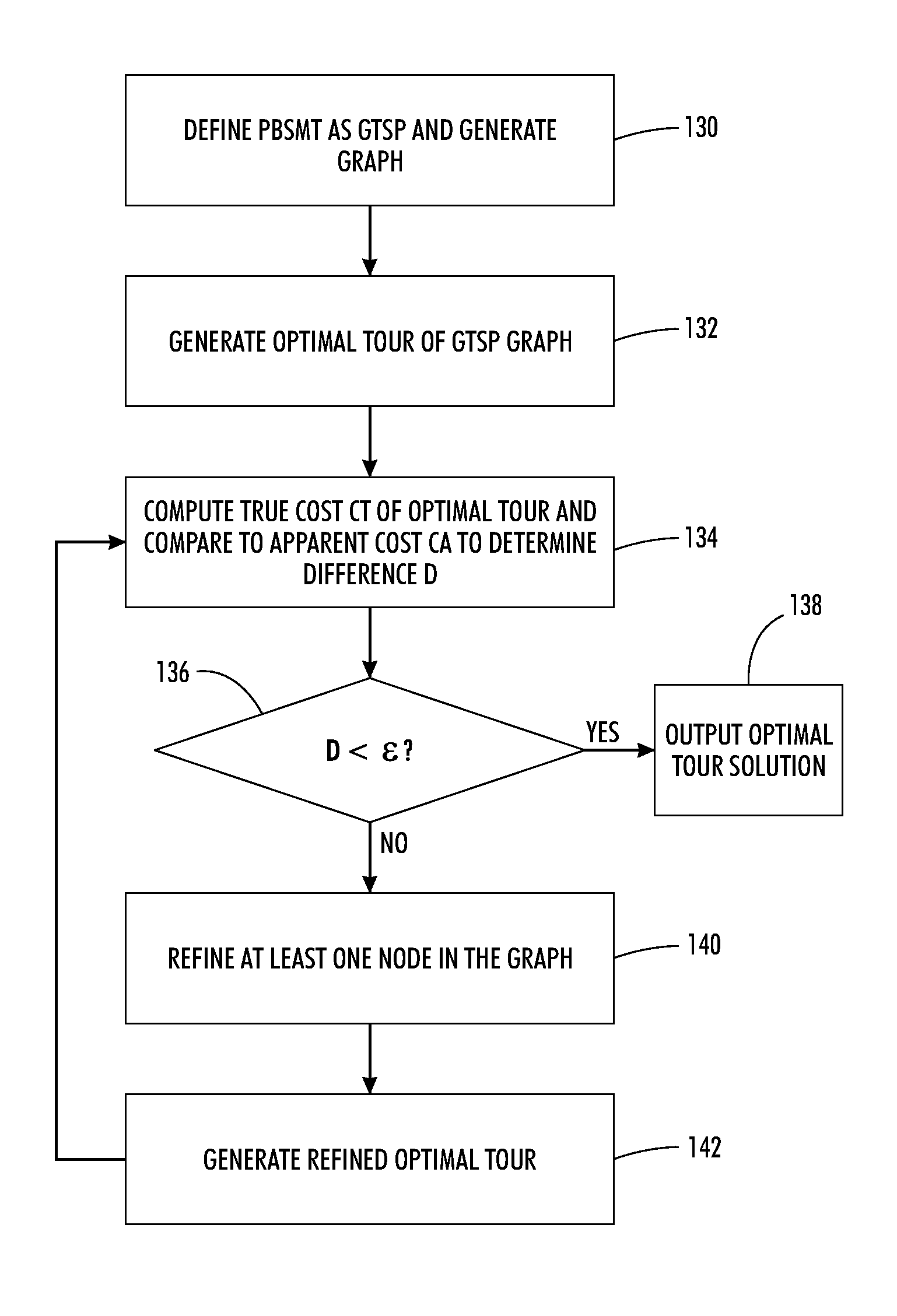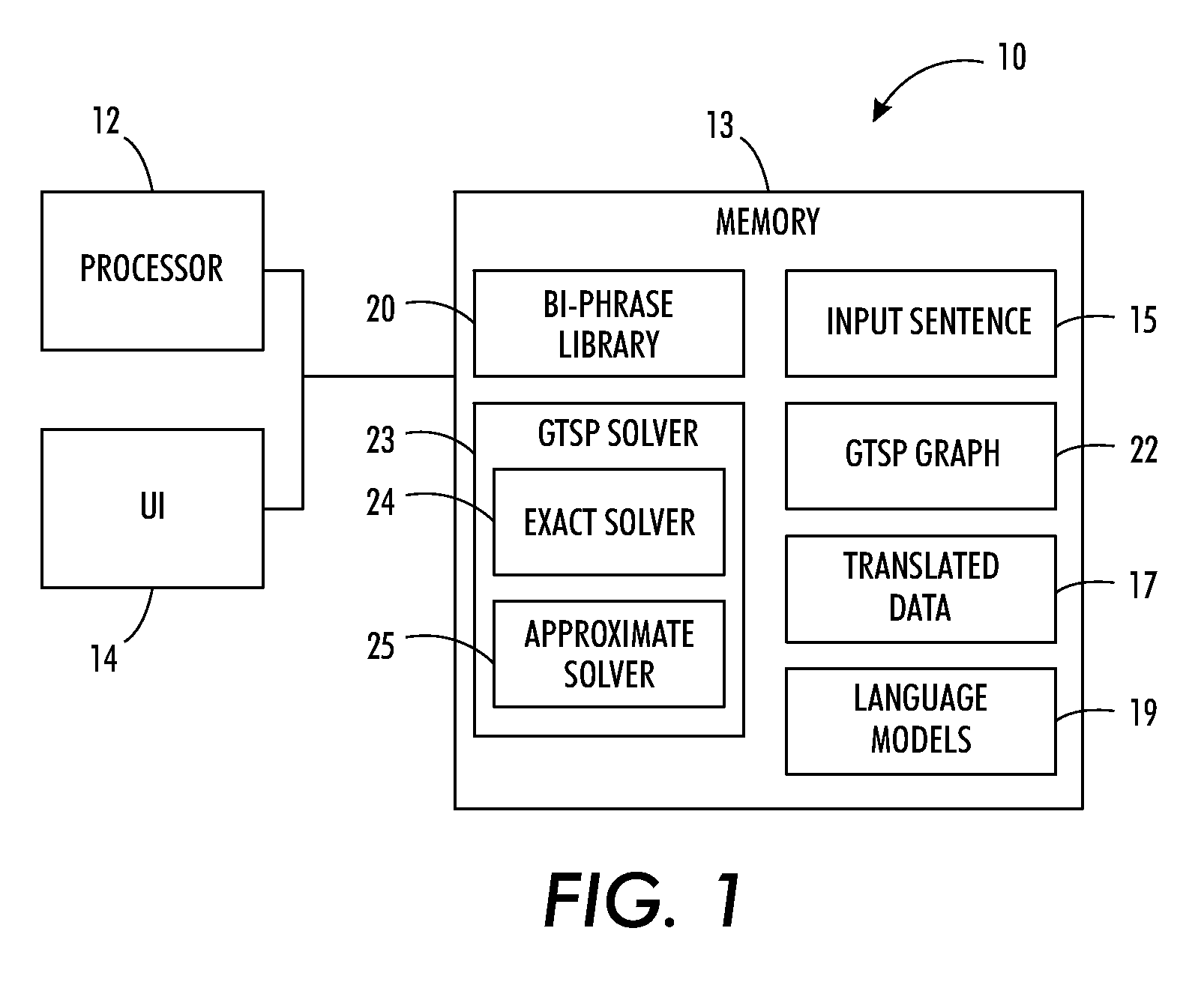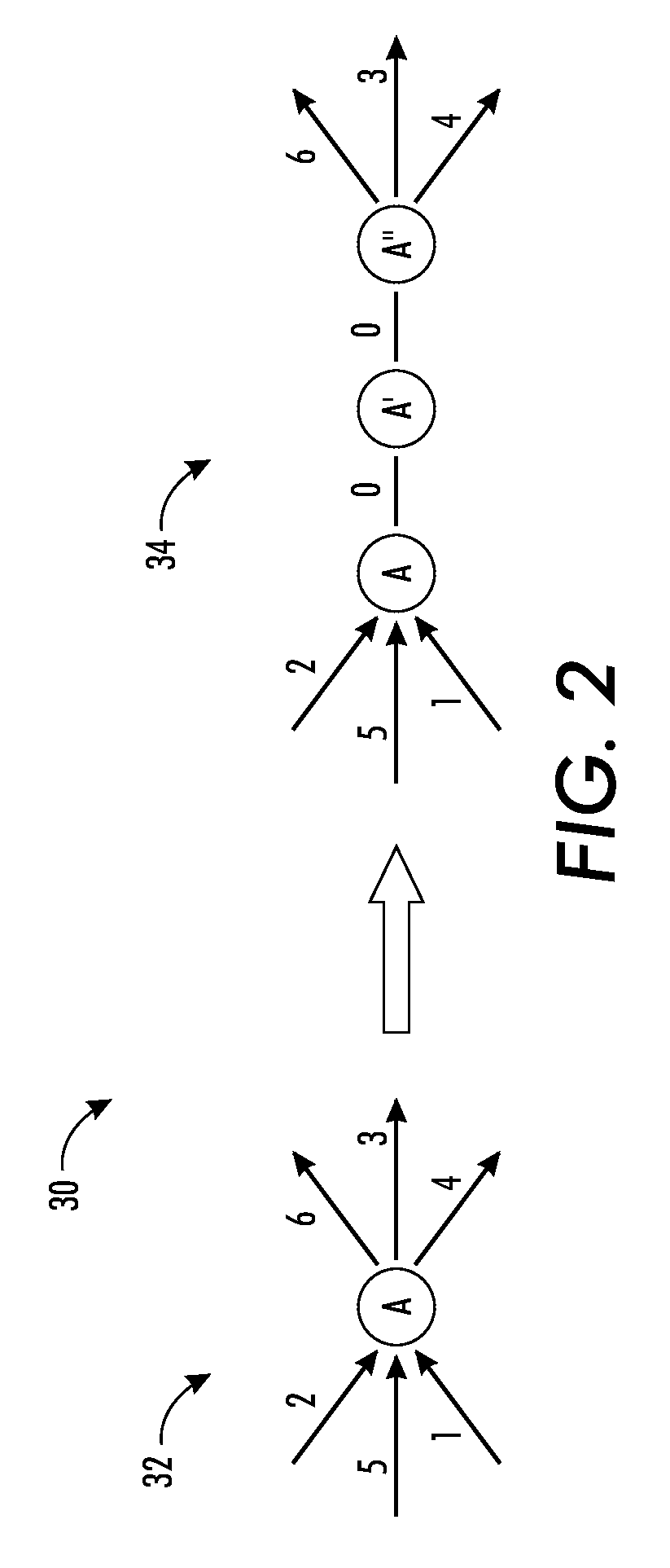Phrase-based statistical machine translation as a generalized traveling salesman problem
a statistical machine and generalized technology, applied in the field of statistic machine translation, can solve the problems of inability to recover easily from early mistakes, inability to solve very small translation problems, and inability to use integer programming approaches, which are very generic, to achieve the effect of facilitating phrase-based statistical machine translation
- Summary
- Abstract
- Description
- Claims
- Application Information
AI Technical Summary
Benefits of technology
Problems solved by technology
Method used
Image
Examples
Embodiment Construction
[0045]In accordance with various features described herein, systems and methods are described that facilitate phrase-based SMT by modeling bi-phrases as nodes in a graph. “Gram,” as used herein, refers to words, such that a bigram language model employs two-word groups, a trigram language model employs three-word groups, and so on. For instance, a different approach to decoding is described which is based on the formulation of phrase-based translation as a Generalized Traveling Salesman Problem (GTSP), a standard generalization of the Traveling Salesman Problem (TSP) described by Fischetti et al. in The Generalized Traveling Salesman and Orienteering Problems (in The Traveling Salesman Problem and Its Variations, 2002, p. 609-662), which is hereby incorporated by reference. The herein-described approach facilitates capitalizing on the wealth of research and (exact or approximate) decoding algorithms that have been developed for solving the GTSP and its simpler version the TSP, some ...
PUM
 Login to View More
Login to View More Abstract
Description
Claims
Application Information
 Login to View More
Login to View More - R&D
- Intellectual Property
- Life Sciences
- Materials
- Tech Scout
- Unparalleled Data Quality
- Higher Quality Content
- 60% Fewer Hallucinations
Browse by: Latest US Patents, China's latest patents, Technical Efficacy Thesaurus, Application Domain, Technology Topic, Popular Technical Reports.
© 2025 PatSnap. All rights reserved.Legal|Privacy policy|Modern Slavery Act Transparency Statement|Sitemap|About US| Contact US: help@patsnap.com



